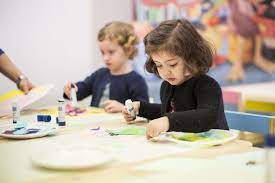Skip to content
- Children can construct their learning.
- All stakeholders value play as the primary source of inquiry.
- Children learn by interacting with their community and collaborating.
- Children are natural communicators, and they should be encouraged in their expression.
- The classroom is the third teacher.
- Teachers are guides, partners, and nurturers who facilitate children’s exploration of their interests while working on short- and long-term projects.
- Documentation is an essential component of communication.
- Parents are active participants in the education process.
- The Principles of Ideal Learning Environments
- The decision-making process reflects an equity commitment.
- Children build knowledge by combining diverse experiences and making sense of the world.
- Play is essential for young children’s development.
- The instruction is tailored to each child’s abilities and development.
- The teacher is a co-constructor and a co-guide, and they provide a nourishing presence.
- Relationships are the key to learning for both children and adults.
- The environment is designed to encourage children’s exploration and independence.
- Childhood is a precious time.
- This brief summarizes the scientific research aligned to ideal learning environments. This brief provides a framework for nine principles that underlie equitable, relational, and developmental models of early childhood learning. However, the principles can/should also be applied in other learning environments. These nine principles are not uniform standards for “quality” but a guide to a holistic early learning approach that benefits children and their communities.



